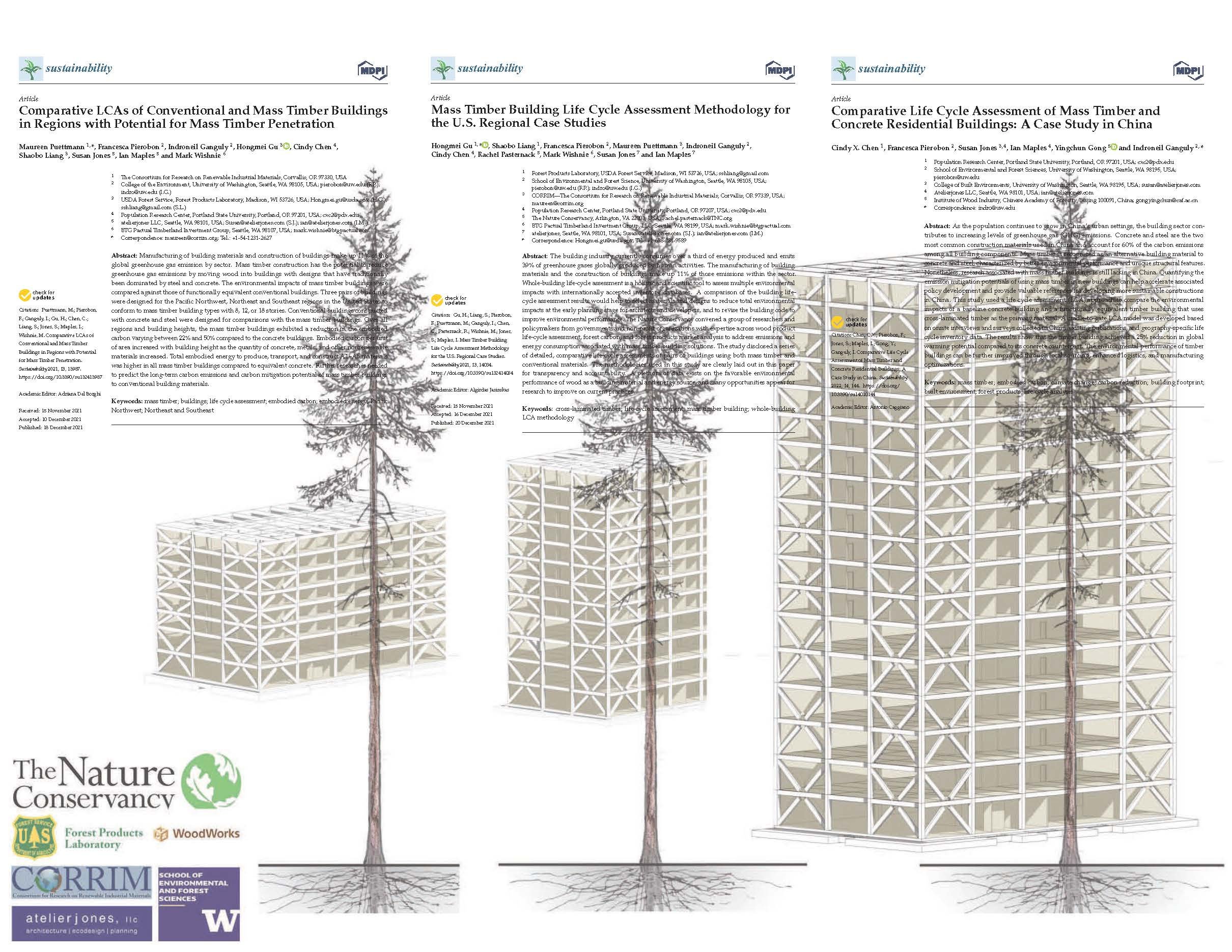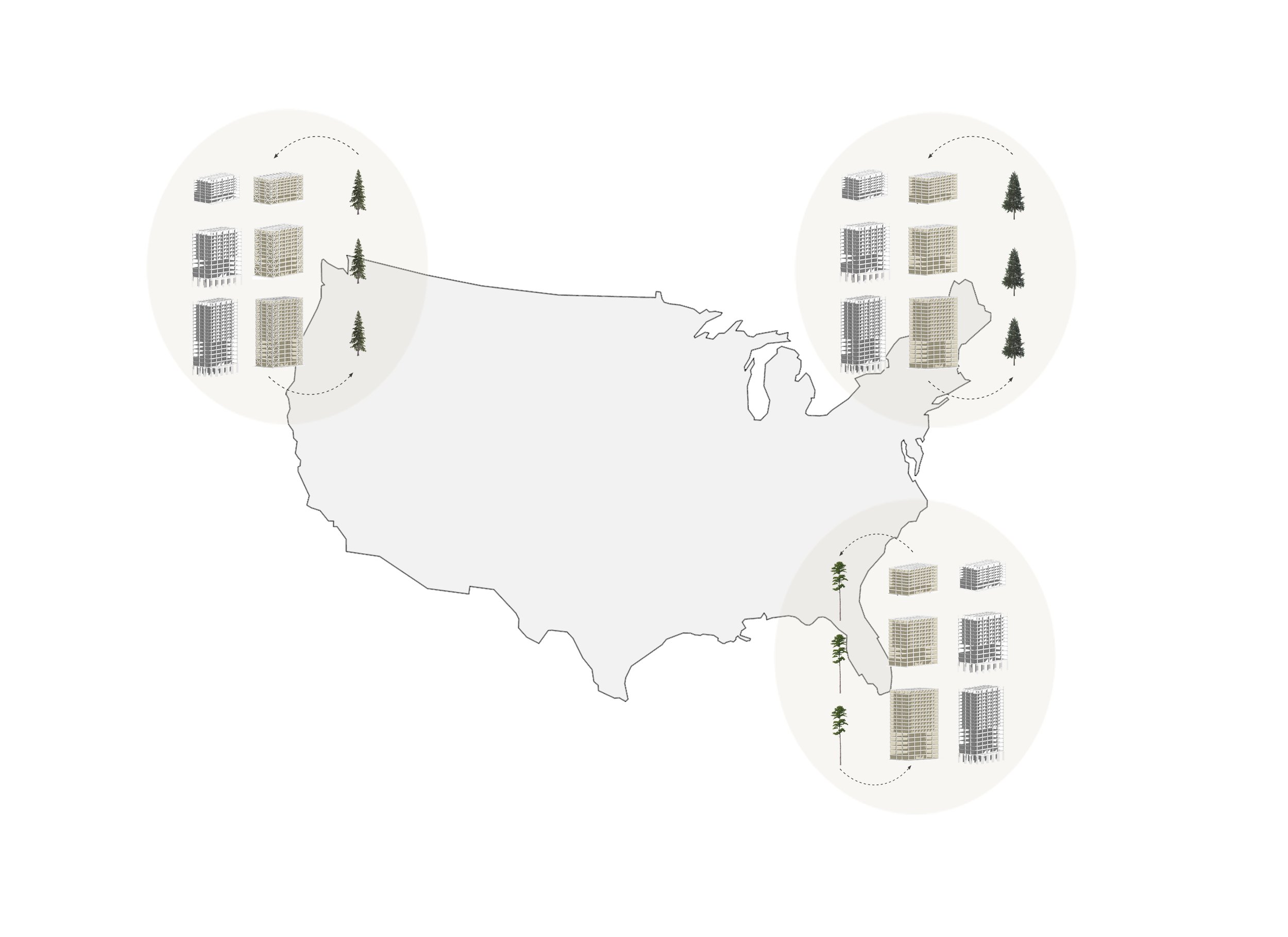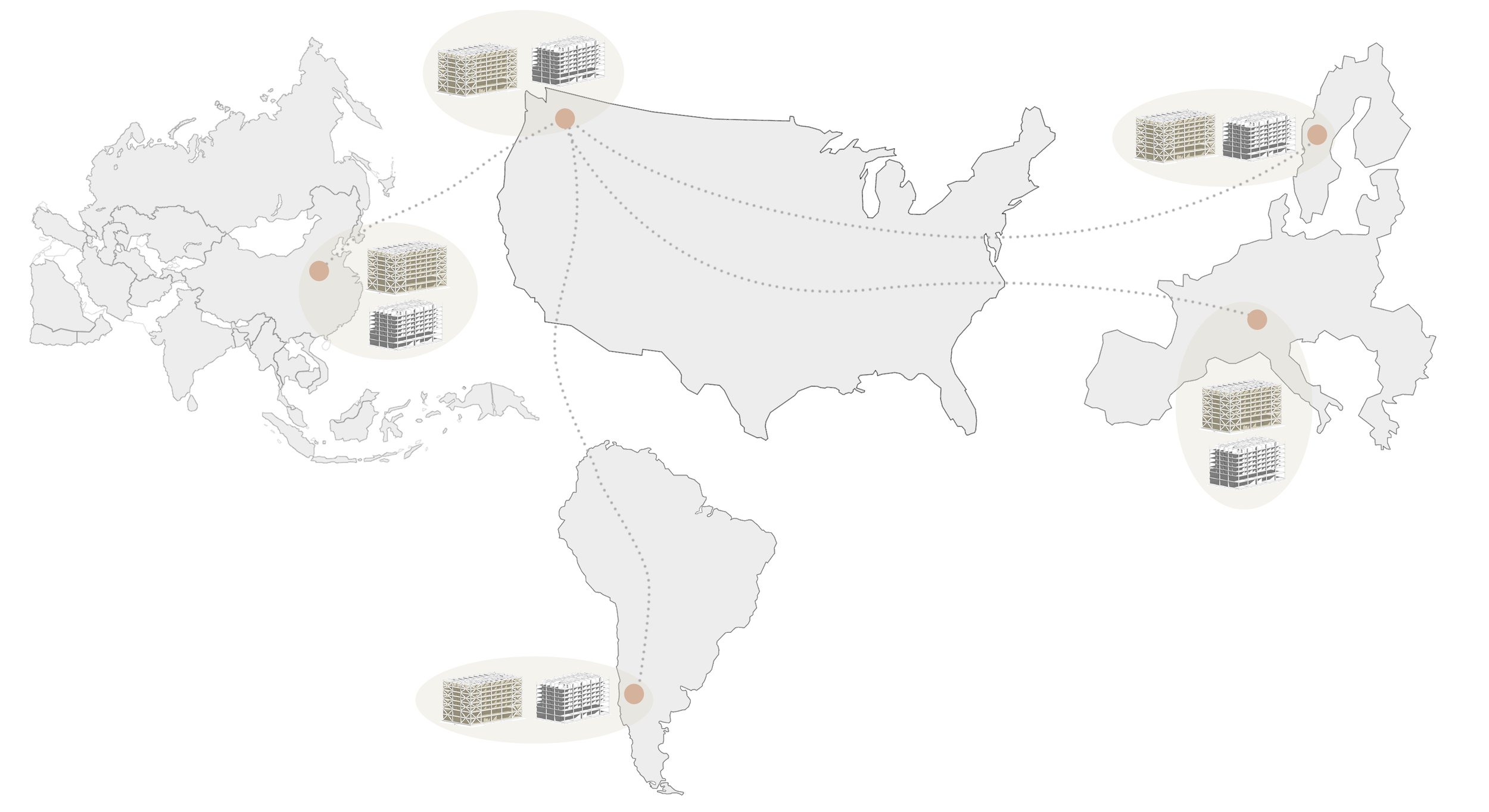NATURE CONSERVANCY LIFE CYCLE ASSESSMENT
Thanks to a grant from The Nature Conservancy and the US Forest Service, atelierjones collaborated on a large, international Mass Timber Life Cycle Assessment (LCA) study led by The Nature Conservancy along with the University of Washington College of the Environment, SEFS, CORRIM, and the USDA Forest Products Laboratory.
For the 2017-2019 study, atelierjones developed nine Building Information Models (BIM) based on the new, three IBC Type-IV Mass Timber Building Codes at 8, 12, and 18 stories, along with nine BIM models of comparative Concrete Buildings. These served as the basis for life cycle assessment in three North American regions, resulting in eighteen LCA studies. A similar comparative study was also conducted using a base concrete building in China, along with atelierjones’ development of a mass timber comparative BIM model. Related atelierjones advisory work contributed to additional Comparative LCA work in Chile and Austria.
Preliminary structural engineering, including foundation design was included for all eighteen case studies, and all Type IV code-required fire-protection measures for the Mass Timber buildings were included. The total GWP of material sourcing, production, transportation, and construction was compared between the Mass Timber buildings and their conventional concrete equivalents. These studies formed the basis for further Nature Conservancy Research/ UW that examined the impacts of increased demand for Mass Timber to global forestry, in order to assess the impact on sustainable global forestry, as a critical foundation of scaling Mass Timber’s potential sustainability benefits.
Mass timber structures were shown across the board to result in a significant embodied carbon reduction—between 22 and 48%—when compared to concrete structures. Results varied by region and building size, with 8-story mass timber structures showing the greatest performance because of their reduced requirement for gypsum fire protection. Regions like the Pacific Northwest with cleaner electrical grids also showed greater benefits.
The results of this extensive multi-year study were issued first as a white paper in 2020, then as a series of five papers published in January 2021 in Sustainability. See the final papers here.




2019-2021
atelierjones: Susan Jones, Ian Maples
COLLABORATORS
Lead Agency: The Nature Conservancy
University of Washington, College of the Environment, School of Environmental and Forest Sciences
The Consortium for Research on Renewable Industrial Materials
The US Forest Service Forest Products Laboratory
Population Research Center, Portland State University
BTG Pactual Timberland Investment Group
Funded by the Nature Conservancy and the US Forest Service
RELATED PROJECTS
Heartwood
Heartwood Replication
Heartwood LCA



